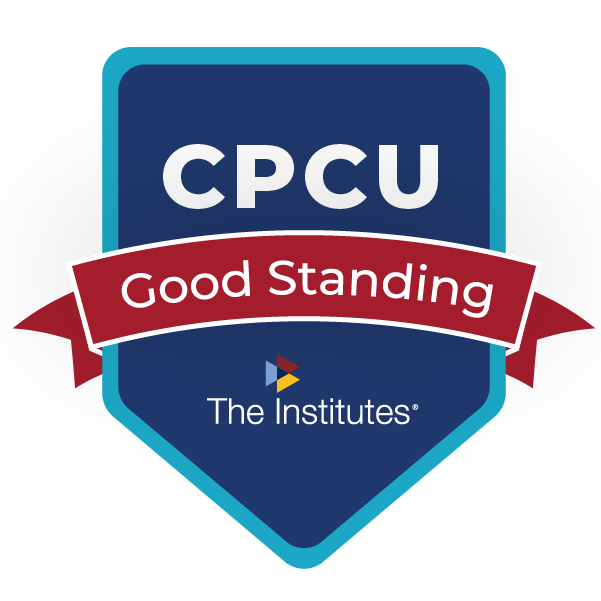Lump Sum Cautionary Tale
February 7, 2014 – You don’t have to look too hard to find stories about people who are worse off because they completely undervalued the concept of planning for the future.
People who choose today at the expense of tomorrow.
I’m talking about people who opt for a lump sum of cash instead of the periodic payment options available to them when they win the lottery, trigger their pension benefits or settle a personal injury claim.
For many, the allure of “having their money and having it now” is too powerful and they forfeit the overwhelming advantages that accompany guaranteed future income.
As we mentioned in one of our blogs last month, the completely independent, nonprofit, noncommercial National Endowment for Financial Education (NEFE) estimates that . . .
” . . . 70% of all people who suddenly receive large amounts of money will lose that money within a few years.”
Today, we have another one to add to our list of sources of lump sum misery courtesy of CNN/Money:
“Reverse Mortgages: Safer but far from risk-free.”
 A few of our favorite quotes from the article:
A few of our favorite quotes from the article:
” . . . many borrowers have run into problems because they took their payment as a lump sum and spent the cash too freely.”
” Homeowners who choose the lump sum option could see their payouts reduced by 10% to 18% . . . “
” Monthly payments usually work out better anyway, especially for those who live longer.”
Although Fred Thompson, Henry Winkler, and a host of other well-known paid endorsers are convincing when touting the benefits of reverse mortgages, the article does a good job highlighting the risks that remain.
Especially with lump sums.
Our firm does not offer reverse mortgages so we will refrain from advising on them other than to say make sure you understand what you’re getting into if you or someone you know is considering one.
We will, however, go out on a very sturdy limb reinforced by mountains of evidence to suggest that anyone choosing a reverse mortgage will be better off if they choose the lifetime income option instead of a lump sum.
Posted: February 7, 2014 | Category: Articles, Blog, Retirement, Structured Settlements | Comments Off on Lump Sum Cautionary Tale
Buffett’s Bet
January 21, 2014 – We’re used to reading about Warren Buffett’s sensible, folksy investing philosophy that has made him one of the world’s all-time most successful – and richest – financiers.
 But who knew he was such a sports wagering junkie?
But who knew he was such a sports wagering junkie?
And we’re not talking about the few dollars or bragging rights most of us risk when we fill out our NCAA “March Madness” Basketball Tournament brackets. That wouldn’t make the news.
What did make the news today is the fact that Mr. Buffett’s company is backing the Quicken Loans Billion Dollar prize to anyone submitting a flawless bracket.
Lump Sum or Annual Payments?
Let’s imagine for a moment you submit a bracket and beat the approximate 1-in-9.2 quintillion (or, 1 billion times 9.2 billion) odds and actually pick all winners.
You now have a choice between:
A) $500 million cash lump sum present value of $1 billion; or,
B) $25 million a year guaranteed for 40 years?
Which would you choose?
On a weekly basis, our firm comes in contact with people facing the same choice when deciding how to accept their personal injury settlement proceeds.
Although the dollars involved have far fewer zeroes than the billion being discussed here, the choice is similar and the questions they ask themselves are the same:
Do I want/need all this cash up front?
Or will guaranteed future payments make me happier?
If I choose cash, do I possess the financial and emotional acumen to make smart choices going forward?
Structured settlements have been helping secure peoples’ futures for more than 30 years. Offering safety, peace of mind and a decided tax advantage not available to the general public, those who are offered a structured settlement should think long and hard before choosing all cash instead.
Stories abound about “lottery millionaires” choosing a lump sum of cash over the security of guaranteed future payments only to end up broke in a very short period of time. In fact, we just wrote about The Real Gamble a few days ago.
So unless your name also happens to be Buffett, we’d strongly urge you to choose the annual payments if you win this particular prize.
And while we don’t know what kind of premium Berkshire Hathaway is charging Quicken Loans to reinsure this contest, it could be a sucker’s bet of epic proportions given its low probability of every paying off.
Regardless, whatever amount of money Mr. Buffett receives for exposing less than 1% of his personal net worth (99% of which he’s pledged to give to charity anyway), we have a hunch he’ll do just fine either way.
Our money’s on Buffett just the same.
Posted: January 21, 2014 | Category: Articles, Blog, Structured Settlements | Comments Off on Buffett’s Bet
The Real Gamble
January 16, 2014 – There’s no shortage of stories about people blowing large sums of money in a short period of time with little or nothing to show for it.
Professional athletes. Rock stars. Movie stars. Everyday people.
While the high profile celebrity-types (who people generally don’t feel sorry for) are the ones who usually make the papers, sometimes it takes an extreme case with criminal implications to illustrate the underlying risks that accompany windfall sums of money.
And when the person is poor and disabled, we get angry.
Take the story of Malcolm Ramsey, a mentally incompetent St. Petersburg, Florida man living in an assisted living facility on government aid. Winner of a $500 per week for life lottery prize, Ramsey chose the lump sum over the cash flow and managed to spend $170,000 – more than half of his after-tax net – within a few weeks.
This story did make the paper because so many unconscionable circumstances surround it. Special thanks to my friend, colleague and lottery winnings expert Don McNay for calling my attention to this sad story.
But many less sad stories that don’t make the papers still involve the same ugly truths about windfall sums of money highlighted by this article:
“Friends” and relatives always seem to show up with their hands out
With so many consumer goods available for purchase, it’s virtually impossible to spend any amount of money too fast
There’s no substitute for professional guidance from someone who understands the problems windfall sums of money can cause
Several times a week, I am involved in situations where people have a choice between receiving a large sum of cash or guaranteed future cash flows tailored to their individual needs.
So many times they choose cash.
While there are seemingly many good reasons to choose cash, statistics from the National Endowment for Financial Education remind us:
“It is estimated that 70% of all people who suddenly receive large amounts of money will lose that money within a few years.”
 People who structure some of their settlement proceeds over time CAN’T spend all their money in a few years.
People who structure some of their settlement proceeds over time CAN’T spend all their money in a few years.
Lottery winners who chose $500 a week for life over cash can’t either.
Given Malcolm Ramsey’s legal capacity issues, it’s hard to lay any fault at his feet.
But hopefully everyone else sees the irony in this story: Windfall cash is the real gamble.
“I was very irresponsible”
January 8, 2014 – Most people who accept structured settlements when settling their personal, physical injury claims are not repeat customers.
After all, most people never file significant injury claims in the first place let alone doing so on multiple occasions.
And since our involvement with a client typically ends once a policy is issued (we don’t go around stalking them after the fact to try to undo their contract), we rarely ever even hear from those we’ve helped along the way.
But on a semi-regular basis we do receive calls from people who have misplaced their policies or have moved and simply need to alert the life company of their new address.
Today was one of those days.
 “Gena” (not her real name) was 18 years old in 2001 when her mom insisted she structure her settlement following an automobile accident.
“Gena” (not her real name) was 18 years old in 2001 when her mom insisted she structure her settlement following an automobile accident.
She had previously settled with the at-fault party for cash and was getting ready to settle her under-insured motorists claim with her own carrier.
Gena’s mom told her she had received enough money from the first settlement and didn’t need any more money at her age so was thrilled when the claims representative offered her daughter a structured settlement.
Court approval was not required since Gena was already 18 but the mom thought it was a good idea anyway.
I took this opportunity to ask Gena how she felt, all these years later, about structuring her settlement.
Almost as if scripted by the National Structured Settlements Trade Association (which it wasn’t), Gena showed no hesitation in telling me how glad she was that her mom “encouraged” her to structure her settlement.
She proudly told me how she had used the structured settlement proceeds to help pay off her college loans and now, at age 32, was going to use some of her money to help furnish a house she had recently purchased.
“I was very irresponsible at that age. 18-year olds don’t need that kind of money. I would have just spent it all anyway on vacations or whatever. I was much better off waiting.”
That settlement occurred half my career ago and hearing this personal account of a structured settlement having such a positive impact on a young person’s life reinforced why I am so proud of what I do for a living.
And for all those insurance carriers and claims representatives who ever doubted the ancillary benefits of offering structured settlements, it turns out Gena had such a favorable impression of her mom’s auto insurer that she now chooses to insure her own car with the same company.
Tough to beat that kind of PR.
Although most of the industry statistics about people spending their money too rapidly as a reason for structuring are only anecdotal, calls like today’s only make such claims easier to believe.
For the record, I have yet to have anyone ever call me to say they regretted structuring their settlement.
So maybe the commercial got it wrong. Maybe not everybody wants their money and wants it now.
Waiting seemed to work out just fine for Gena.
Posted: January 8, 2014 | Category: Articles, Blog, Structured Settlements | Comments Off on “I was very irresponsible”
Where’s the fourth bucket?
January 7, 2014 – Some seemingly sensible retirement planning ideas just don’t hold water when scrutinized.
Take Jane Bryant Quinn’s article, “Don’t Be Too Cautious,” appearing in this month’s AARP Bulletin for instance.
While the underlying premise of her article – allocating one’s retirement funds into a series of “buckets” designed to maximize retirement cash flow while protecting against loss – is well-intentioned, it leaves the reader with a false sense of the very security retirement is supposed to provide in the first place.
The web version of the article even carries the unfortunate and misleading headline “Securing Income for Life.”
In other words, her bucket has a hole in it.
Stocks and Risk
While stocks historically increase the value of one’s portfolio over long periods of time, they cannot be relied upon to deliver certainty, especially when it comes to timing their conversion to cash flow.
One of the more irresponsible passages surfaces in paragraph eight:
“By the time your bond bucket runs low, your bucket of stocks will have grown in value, maybe by a lot.”
Maybe your bucket of stocks will contain shares of companies managed by the same guys who ran Enron into the ground.
Maybe you won’t mind eating at soup kitchens or moving in with your kids if your stock bucket leaks.
Besides, how does Ms. Quinn know what stocks will or won’t do? Or when?
The article is filled with similar assumptions that stocks “will” increase at just the right time and this recommended bucket approach “could” make your retirement “potentially” greener “if” certain things come to pass.
But words like could, potentially and if are not synonyms for security.
Ms. Quinn knows this and should have done the 50-plus crowd a better service by apprising them of the inherent risks of her strategy.
Sure, it might work out but who wants to take chances with money they can ill afford to lose?
Just add a fourth bucket
Perhaps if she simply added a fourth bucket to the mix, one for annuities, she could legitimately classify this as a true “Securing Income for Life” strategy.
After all, outside of pensions and Social Security, life annuities are the only way to guarantee you will never run out of money.
Even the wisdom of the long-touted 4% draw down strategy she hangs her hat on throughout the article is being called into question as this Wall Street Journal article, “Say Goodbye to the 4% rule,” from last March illustrates.
We don’t disagree that Ms. Quinn’s suggestion has some potential.
We aren’t against incorporating stocks into one’s overall retirement strategy.
We just firmly believe that annuities have earned the right to be included in ANY conversation about assuring lifetime security in retirement and were disappointed such a respected author would omit them from an article in a periodical wielding such powerful influence.
Posted: January 7, 2014 | Category: Articles, Blog, Retirement, Structured Settlements | Comments Off on Where’s the fourth bucket?
Structured Settlements Looking Up
January 6, 2014 – Structured settlements were created to specifically help address the long term financial needs of those settling personal, physical injury claims.
Because injury settlement proceeds represent neither savings nor investment dollars, comparing their returns to other “investments” can be a dangerous method of evaluating their imporatance to someone who can’t risk losing money.
This helps explain why structured settlements have remained an extremely popular cash settlement alternative for decades even though rates fluctuate.
After all, what’s not to like about something that is:
100% income tax-free (principal and interest);
tailored to one’s unique set of circumstances;
safe, secure and guaranteed by highly rated companies?
Yet, even though they are not investments per se, like the kids in the AT&T commercial who intuitively understand that “more is better,” everybody prefers higher payouts to lower ones, everything else being equal.
For this reason, we’re happy to report that a recent financial barrier was eclipsed as America was gearing up to change calendars in late December.
 The 10-years Treasury closed above the psychologically important 3.0% threshold for the first time in more than two-and-a-half years.
The 10-years Treasury closed above the psychologically important 3.0% threshold for the first time in more than two-and-a-half years.
While investors don’t cheer when bond rates rise, those looking for long-term financial security do.
What’s this got to do with structured settlements?
As one of our life company partners communicated on Friday:
“Higher rates will make our structured settlement products even more attractive as we begin the new year.”
So if you’ve been on the sidelines for the past few years assuming that “structured settlement rates are too low,” make this the year you resolve to jump back in.
Whether you are a claims representative or plaintiff attorney negotiating an injury settlement, DON’T ASSUME rates are “too low” for you to consider.
Incorporating a structured settlement into an overall claim resolution is a proven strategy that can add much value to the settlement process and much security to the injured person.
Best wishes for a healthful and prosperous 2014!
Posted: January 6, 2014 | Category: Articles, Blog, Structured Settlements | Comments Off on Structured Settlements Looking Up
2014 Financial Resolutions Study
December 31, 2013 – According to the recently published Fidelity 2014 New Year Financial Resolutions Study, 54% of you are making financial resolutions for the coming year.
While we can’t help you save more, spend less or pay down debt – the top three financial resolutions cited in the study – there are two specific areas where we CAN help you take command of your own financial future.
Retirement Annuities
Retirement account balances have rebounded, America is getting older and nobody wants to risk losing money again as happened to many during the Great Recession.
Add to this the fact that people are happier and feel more secure when they know they are receiving guaranteed lifetime income and the stage is perfectly set for a conversion of some of those ear-marked funds to a lifetime annuity.
Through the first nine months of 2013, $167.6 billion worth of annuities were purchased according to Life Insurance Marketing and Research Association (LIMRA).
While every annuity channel experienced increased activity, we concentrate on helping clients with low-to-moderate risk tolerance with their Fixed Annuity and Indexed Annuity choices to meet their retirement planning needs.
Structured Attorney Fees
Contingency fee-based attorneys have a unique opportunity to defer recognition of earned fees into a future year for a distinct tax advantage.
So strongly do we believe in this popular money-saving strategy which accounts for about 25% or more of our business in any given year that we maintain a companion website dedicated to the topic:
And even though she wasn’t specifically talking about structured attorney fees, InvestmentNews columnist Darla Mercado helps illustrate the case for this option in today’s article “Getting a jumpstart on 2014 tax planning” by urging . . .
” . . . certain high earners might want to manage their income stream in order to keep themselves from drifting into higher tax brackets.”
So if your New Year’s resolution involves securing your financial future, we hope you’ll give us an opportunity to show you how we may be able to help you achieve your goals.
Posted: December 31, 2013 | Category: Articles, Blog, Retirement, Structured Settlements | Comments Off on 2014 Financial Resolutions Study
2014 Poised To Be “The Year of The Annuity”
December 23, 2013 – It’s always nice to read something that gives you reason for optimism as you prepare to change calendars and head into a new year.
An article in today’s InvestmentNews caught our eye because it predicts 2014 could “be a big one” for a certain financial option near and dear to our firm’s heart.
“New year could bring a boon for annuities,” points toward a growing appreciation for this powerful, if historically under-appreciated, financial security solution.
If you’ve felt completely clueless about what an annuity is or how you can benefit from owning one up to this point in your life, fear not.
You are not alone.
Because 70% of the public cannot correctly define an annuity, the Insurance Information Institute produced this 2-minute video as a public service to help fill the educational void:
All this lack of knowledge is changing, though, as built up demand for safe, secure cash flow options increases.
People want safety and security and many are more than a little risk averse.
As specialty annuity specialists (say that three times fast!), we are focused on helping people secure their financial futures through the effective use of specialty annuity products and services tailored to their unique needs.
While structured settlements remain the foundation of our business, we have experienced a major increase in requests from long term clients seeking assistance in converting their retirement savings into a “personal pension” so they never have to worry about outliving their money.
Part and parcel to this long-term retirement planning focus has been the significant increase in requests from plaintiff attorneys desiring to structure their fees. In fact, 2013 was our best year ever in this area as tax brackets have risen.
So if one of your New Year’s resolutions is to take charge of your own retirement, let us show you how we have helped so many others.
 2014 may be the Year of the Horse according to Chinese zodiac, but right here we’ll also be celebrating the Year of the Annuity.
2014 may be the Year of the Horse according to Chinese zodiac, but right here we’ll also be celebrating the Year of the Annuity.
You are most welcome to join the celebration with us! Call anytime we can help.
Best wishes for a very, Merry Christmas and a Happy and Prosperous New Year.
Posted: December 23, 2013 | Category: Articles, Blog, Retirement, Structured Settlements | Comments Off on 2014 Poised To Be “The Year of The Annuity”
Locking in Your Gains . . . For Life
December 5, 2013 – If you’re among the lucky ones, you had some retirement money saved up in your 401(k) or IRA in 2008, lost a bunch of it in the ensuing Great Recession years, gutted it out through 2013 and now have recovered most, if not all, of the wealth you originally watched evaporate.
If you were even luckier, you stayed invested and maybe even continued to make contributions to the market and are now comfortably ahead of where you were back then.
So now what?
 My choice of gambling oriented words like “lucky” and “luckier” in the first two paragraphs is not accidental. The market is, after all, a crap shoot which goes up some years and goes down others even if the longer term direction trends positive.
My choice of gambling oriented words like “lucky” and “luckier” in the first two paragraphs is not accidental. The market is, after all, a crap shoot which goes up some years and goes down others even if the longer term direction trends positive.
But nobody, and I mean NOBODY, really knows what the market will do in the future despite the availability of exhaustive data and the existence of many sound strategies designed to help “hedge your bets” if you do choose to stay in the market.
Because negative years in the stock market, when experienced closer to retirement, can disproportionately and detrimentally impact one’s chances for retirement security and happiness, many people look for safer alternatives to simplify their golden years.
Enter deferred-income annuities
Earlier this week, under the broad heading of “Best New Money Ideas,” CNNMoney featured six “Best new ways to make money” as we head into 2014.
According to the authors, one the “Best new investment ideas” is also the “Best new retirement tool . . . ”
 We haven’t seen the word “Best” featured so prominently in an article since the August 23, 1962 issue of Mersey Beat when The Beatles announced Ringo was joining the band as its new drummer.
We haven’t seen the word “Best” featured so prominently in an article since the August 23, 1962 issue of Mersey Beat when The Beatles announced Ringo was joining the band as its new drummer.
And NEVER In a financial column.
(Emphasis on Best is ours throughout, btw)
The CNNMoney piece describes an excellent retirement strategy, growing exponentially in popularity, designed to ensure you don’t end up broke in your later years.
With life expectancies ever-increasing, designating a portion of your retirement assets NOW to guarantee lifetime income in the FUTURE is one of the Best things you can do to secure your future.
And it’s not just easy, it makes financial sense:
“lifetime annuities are . . . the most cost effective and least risky asset class for generating guaranteed retirement income for life.”
– Economists David F. Babbell and Craig B. Merril –
I hope you’ll take a few moments to read the helpful CNNMoney column.
Then give us a call. We’ll provide you with several preliminary quotes and we’ll walk you through the rest if you decide this option makes sense for you.
We like helping make people happy and helping them secure their financial futures.
You might even say it’s what we do Best.
Posted: December 5, 2013 | Category: Articles, Blog, Retirement, Structured Settlements | Comments Off on Locking in Your Gains . . . For Life
November 22, 1963 Reflections
November 22, 2013 – Average life expectancy at birth being what it was in pre-war America, it’s a sobering reality that a significant percentage of Americans who were adults aged 30 and older in 1963 are no longer around to share their “I remember the day President Kennedy was shot” stories with us.
In another 20 years or so, all of them will likely be gone.
So the story-telling will ultimately fall to those of us who were just kids on that tragic day to share our reflections until, by the 100th anniversary of Kennedy’s assassination, no one will be left to talk about what they remembered.
And given a kid’s natural lack of appreciation for the true significance of current events as they occur, I hope any insensitivity of our perceptions will be forgiven.
My Story
I can’t actually remember whether or not it was preceded by a P.A. announcement but sometime in the middle of the afternoon, not long after lunch and shortly before we would leave school for the weekend, Sr. Marlene told us President Kennedy had been shot.
can’t actually remember whether or not it was preceded by a P.A. announcement but sometime in the middle of the afternoon, not long after lunch and shortly before we would leave school for the weekend, Sr. Marlene told us President Kennedy had been shot.
Because we all wanted to help him get well, we were instructed to get out of our desks to kneel and pray for his recovery.
President Kennedy was, after all, the second most important Catholic in the world after the Pope.
At Holy Family, we had kneeled by our desks in prayer before. A rote exercise, like saying the Pledge of Allegiance, our regular prayers were part of our morning routine if we didn’t have Mass. Usually, though, it was not much more than a quick Hail Mary and maybe a Glory Be or two. Kneeling for a bit wasn’t a big deal.
But this day would be different.
Whether the floors were hardwood, tile, terrazzo or whatever they make anvils out of, I can’t recall. I can only tell you that people were not meant to kneel for extended periods of time on hard surfaces.
Maybe this kind of thing was de rigueur in the Middle Ages but it certainly wasn’t cutting it in 1963. At least not for me.
If the president would just hurry up and get better, we could get back in our seats. What was taking so long? Why wasn’t this working? My knees hurt!
We weren’t allowed to talk but, wondering if my classmates were equally discomforted by this cruel rite that went on for the better part of an hour if not longer, I turned toward my friend John Bodnark when Sr. Marlene wasn’t looking to see how he was holding up.
His expressive look of disbelief was only slightly reassuring that someone else felt the same as I. He mimed that he was kneeling on his fingers every so often to disperse some of the weight. Not a bad idea. I tried it. It helped and I was grateful.
Over on the other side of the aisle, Joni Baugh, the apple of my second grade eye, was downright stoic. Angelic in her sincerity with eyes closed, head bowed piously and mouthing devotions with the conviction of a saint, I was only too aware that girls just seemed to be better equipped to handle this kind of thing.
With mixed emotions of agitation and relief, we were finally allowed to board the school buses for home still believing the president was in the hospital. We may have even been sent home early. I don’t remember.
Walking through our back door by way of the garage that day (nobody used their front doors except to greet delivery people and company), my mom was waiting in the kitchen to meet my older brother and me when we arrived home from school.
“Do you know what happened today?” she asked not even bothering to find out how our day was as she usually did.
“Someone shot the president,” I responded matter of factly. “Is he okay?”
That’s how I learned John F. Kennedy was dead. My mom told me in our kitchen.
The nuns must have known by the time we left school that JFK was dead but wanted our parents to tell us the news I’m pretty sure. Probably a good call.
My mom’s delivery of the news was pretty steady. However traumatized she may have been inside, she probably didn’t want to upset her boys so she kept her emotions in check.
While this news surprised me a little bit because it never occurred to me that the president would actually die, everything in my house still looked the same so I just assumed everything would go on as usual.
I went to change out of my school uniform into my play clothes shrugging off the news of one of the seminal moments in world history.
Thanksgiving was next week and my birthday was coming up in a few days on the 25th, a birthday I shared with my baby brother, Dennis, who would be turning two and the president’s son, John-John, who would be celebrating his third birthday. I was going to be eight.
Wonder what kind of presents I would get?
The next morning was when the gravity of the situation hit me personally and really made me sit up and take notice of what was going on.
Where were the cartoons?
Every single television station, all three of them, had continuous coverage of nothing but old people talking and walking around in overcoats.
Whoever heard of a Saturday morning without cartoons?
I wanted Beany and Cecil, Quick Draw McGraw, Bugs Bunny and the rest of my regular Saturday morning pals but all I got was the drone of people talking about the same thing and no amount of protesting and complaining was going to change my weekend reality.
“You watch this. You’ll never see anything like this again as long as you live,” my dad insisted.
It would be many years before I fully appreciated how right he was.
The next day when Oswald was shot, I assumed everyone would be happy. After all, in the movies, when bad guys were shot, it was a good thing.
Wasn’t this the way it was supposed to be?
This is why I was so surprised to discover my mom talking to someone on the phone, probably her mom, late that Sunday afternoon crying because Oswald had been killed.
“First Kennedy and now Oswald,” she sobbed. “What’s this world coming to? What next?”
No comforting answers would be forthcoming.
Now I was really confused though. My mom never cried when Kennedy was shot but she cried when Oswald died? Why wasn’t she happy about this? After all, he was the bad guy, right?
As the weekend drew to a close, my final Kennedy remembrance was that of my dad and family friend Henry Withers watching the news coverage of Oswald’s assassination in our living room.
“Look at him. He’s just waitin’ for it. He knows it’s coming,” Henry insisted, an early devotee of the conspiracy theory that casts Jack Ruby as the hired gun sent to silence Oswald.
Henry and my dad spent the rest of Sunday evening drinking and debating what really happened that fateful weekend.
Within the year, our family would relocate to another city causing me to leave behind friendships that would never fully develop but paving the way for many others that never would have been.
Both events were early, if harsh, lessons that life always goes on.
Tragic events often cause people to make decisions they might not otherwise make so who knows if the Kennedy assassination had anything to do with my parents’ decision to relocate back the city where their own parents still lived.
I just know that fifty years later, people are still debating what happened in Dallas on November 22, 1963.
And even if a lot of them are doing so online instead of sitting in living rooms together, such a shared experience connects us all regardless of our backgrounds.
A few of us are even still around who can still say “I remember the day President Kennedy was shot.”
Now if only we were sure we knew the whole truth.




















